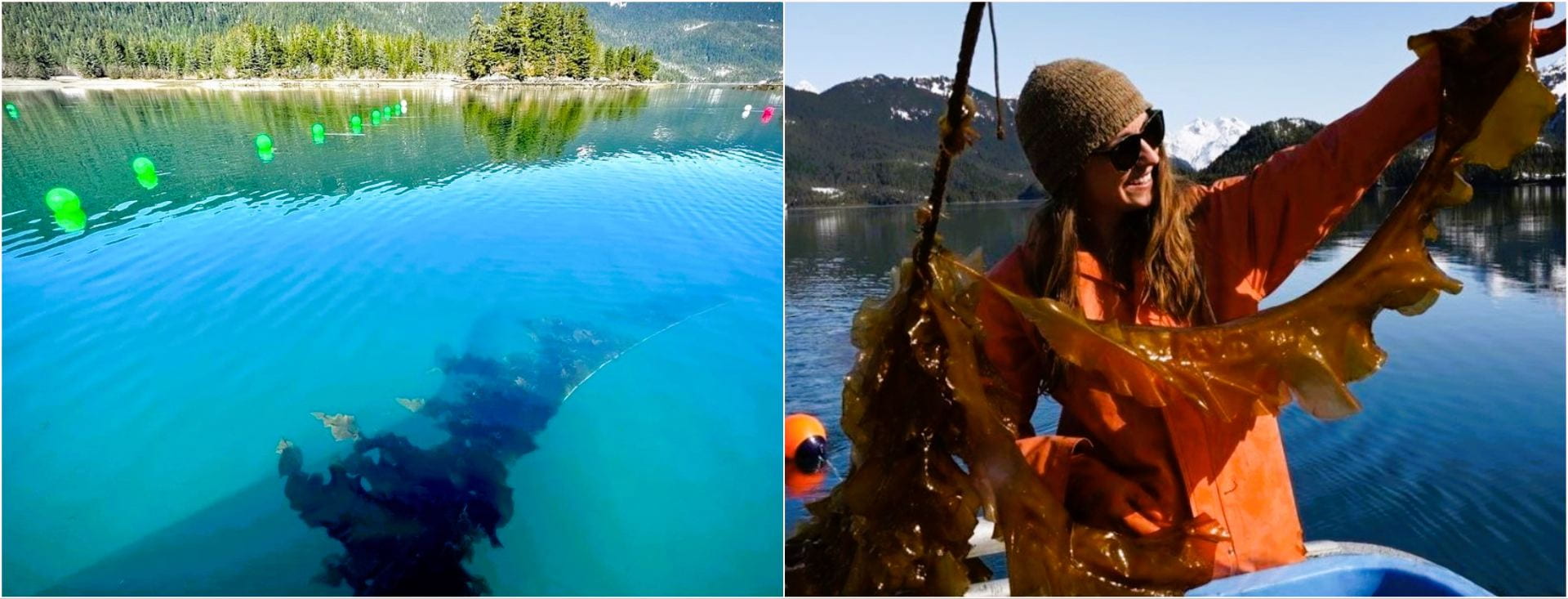In Prince William Sound and several other regions in Alaska, kelp farming is a budding, regenerative industry, adding to the vibrancy of working waterfronts. I am a fourth grade teacher at Mt. Eccles Elementary School in the Cordova City School District and also a kelp farmer. My husband and I started Noble Ocean Farms in January 2020. From the start, I was determined to find ways to weave my passions of education and ocean science.

I started bringing my kelp enthusiasm into our classrooms in February 2022, beginning with 4th and 5th grades at Mt. Eccles Elementary. I offered students an overview of the unique opportunities we have to grow highly-nutritious and culturally-significant sea vegetables right in our own backyard – the bays of Eastern Prince William Sound.
The students responded with great curiosity, asking thoughtful questions and coming up with their own innovative ways to improve farming systems. These farming systems are called arrays, and are made up of ropes/lines, anchors, seine rings, snaps, and buoys, usually configured in a rectangle, with growlines submerged 5-7 feet parallel to the surface. Students brainstormed and illustrated ideas for using boat rigging to create new gear deployment strategies and harvesting techniques.
In 2023, I facilitated hands-on kelp experiments in 2nd grade. I brought in some sugar kelp we grew on our farm. First, I taught them about the structure of various seaweeds, including the holdfast, blade, and stipe. Students made observations of the kelp when it was fresh and raw, producing some cool pastel art pieces in the process!

I then discussed the procedures of the forthcoming experiment and taught them about writing hypotheses. Next, they all formulated their own hypotheses about what they thought would happen when we put the raw kelp into the boiling water, prompting them with the question: “If we put the kelp in boiling water, what might change?”

After that came the really fun part: doing the science experiment and observing the changes! When we put kelp in boiling water, the heat broke down the brown pigments (took away the brown color of the raw kelp). Only the green chlorophyll remained. I explained that: “Chlorophyll is responsible for the green color of many plants and algae, like kelp. Chlorophyll’s job in a plant is to absorb light—usually sunlight. The energy absorbed from light is used in photosynthesis.” We reviewed what “photosynthesis” is: “the process of how plants make their own food. Every plant uses air, water, and sunlight to make its own food. They make glucose, a type of sugar, that allows them to grow” (National Geographic Education, 2024).
Students were fascinated by the chlorophyll connection between marine macroalgae and land plants. The interesting thing about kelp is that every single cell in the seaweed is capable of photosynthesis, versus land plants, in which only the green parts can create glucose. We then discussed different ways that kelp can be used in the kitchen and all of the fabulous nutritional benefits it has for our own bodies.

Working with our Food Services Director, Sandie Ponte, we were able to get kelp onto students’ plates after some rigorous testing and careful preparation. I gave each lunch period a quick presentation about kelp before they tried it as salsa verde on top of their cheesy nachos. Students certainly enjoyed the experience, and it was just the beginning of recipe development for incorporating these locally-grown sea vegetables in school lunches.
In the coming years, I would also love to get grants to bring students to the kelp farm and facilitate students growing native seaweed species in a tumble culture tank in their own classroom!